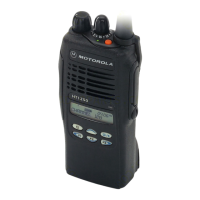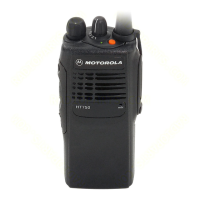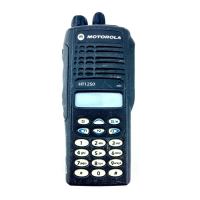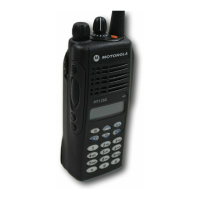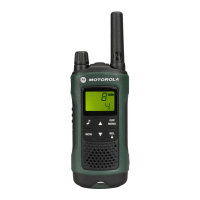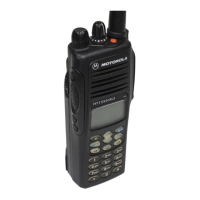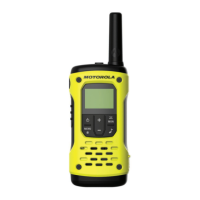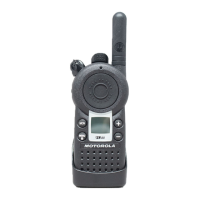7-16 Low Band, 800 MHz, PassPort & 900 MHz Theory of Operation: Trunked Radio Systems
7.9.4 PassPort
™
Trunked Systems
PassPort is an enhanced trunking protocol developed by Trident Microsystems that supports wide
area dispatch networking. A network is formed by linking several trunked sites together to form a
single system. This offers users an extended communication coverage area. Additionally, users with
PassPort can seamlessly roam among all sites within the network. Seamless roaming means that
the radio user does not have to manually change the position on the radio when roaming from site-
to-site.
For models which feature PassPort Trunking operation, the standard keypad board is replaced with
the PassPort Trunking Controller Board (PTCB). This board also provides advanced voice storage
features. Refer to the PassPort Controller Schematic Diagram on page 9-446 for connector and
signal routing from, to and through the Radio, PTCB and Liquid Crystal Display (LCD) sub-systems.
7.9.4.1 Power Supplies
The radio supplies regulated Vdd of 3.3 Vdc. This is used to power the Low Speed Data Filter and
Voice Storage circuits. The radio also supplies Switched Battery Voltage (SWB+). U612 regulates
the SWB+ to 3.3 V which is applied to the PTCB microcontroller U601. A filtered voltage (Vdda) of _
Vdd is developed by U603–4 and is used to supply a clean reference bias for the Low Speed Data
filter and Voice Storage circuits. The circuit of Q607 which can limit the voltage applied to the Voice
Storage chip is not used in portable applications and is disabled by 0 Ohm resistor R614.
7.9.4.2 Microcontroller (MCU)
PassPort Trunking operation is managed by the reprogrammable FLASH ROM based
microcontroller (U601). The MCU clock oscillator uses 8 MHz crystal Y601 as a stable resonator.
The PTCB communicates with the main radio microcontroller by attaching to the same Serial
Peripheral (SPI) bus that passes though the PTCB to the LCD on the CLK, DATA, RDY, and MISO
lines. The OPT_EN line is strobed low only for communications with U601.
The MCU includes an on-chip Analog to Digital Converter (ADC). The received and filtered sub-
audible low speed trunking data waveform is applied to one of the ADC inputs. The software in the
MCU decodes and acts upon the trunking data.
The MCU includes a Digital to Analog Converter (DAC). As required, the MCU software generates
appropriate PassPort Low Speed Trunking Data waveforms. These are applied to the Low Speed
Data Filter and then to the radio transmitter modulation point. The amplitude of this waveform and
the resulting transmitted deviation is controlled by software.
7.9.4.3 Low Speed Data Filter
This analog circuitry is a 4 pole, 150 Hz cutoff low pass filter comprised of U603-1, U603-2 and
associated passive components. In receive mode, it removes noise and voice band signals leaving
only the low speed data waveform which is applied to the ADC input of the MCU. U608-4 isolates the
receive signal from the filter in transmit mode. When the radio is transmitting PassPort data, the
MCU DAC low speed data waveform is applied to the input of the filter which removes harmonics
that would interfere with voice and applies the resulting sub-audible data to the radio transmitter
modulation point.
7.9.4.4 Keyboard Circuit
The keyboard consists of a matrix of key switches and resistors as described in Chapter 3. U605-2
monitors the column voltage and applies an interrupt signal to the radio microcontroller when any
key is pressed.
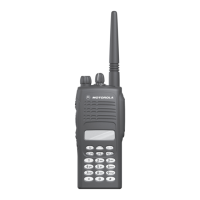
